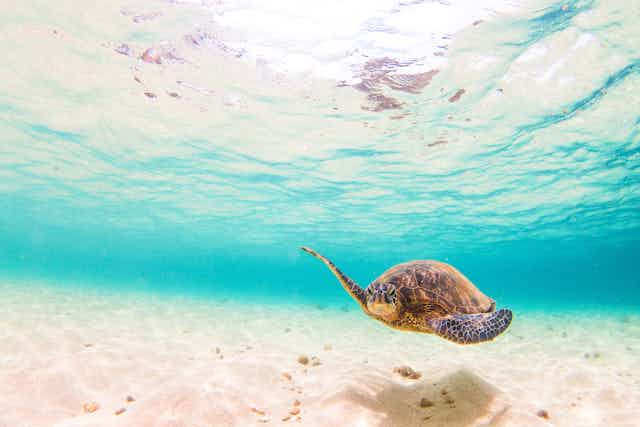The seas around Hawaii are set to become the world’s largest marine protected area, US president Barack Obama has announced. The Papahānaumokuākea Marine National Monument will be expanded to more than 1.5m square kilometres – that’s as big as France, Spain and Germany combined.
If this story sounds familiar that’s because it is. Last year, the UK created the previous world’s largest continuous marine reserve around the Pitcairn Islands, and it set up another huge protected area around Ascension Island in January 2016. Chile, France and New Zealand have all made similar moves in the past few years, turning the waters surrounding their most remote island territories (such as Easter Island) into huge nature reserves.

Supporters say these marine protected areas, known as MPAs, have a key role to play in marine conservation as they protect from fishing, mining, drilling or other human activities, and allow habitats and species to be restored.
Yet these protections might be undermining the very aims of global marine conservation targets. As we argue in a viewpoint published in the journal Marine Policy, it’s not enough to simply cover the remotest parts of our oceans in notional “protection” – we need to focus on seas closer to shore, where most of the fishing and drilling actually happens.
Boom in massive reserves
Under the UN’s Convention on Biological Diversity, signed by almost every country in the world, one of the agreed targets is to designate 10% of the area of the world’s oceans as MPA by 2020. We are a long way from this, however, with less than 4% of the global marine area currently protected.
Even this is largely thanks to vast remote MPAs in distant seas that are subject to few human pressures. While there are more than 6,000 MPAs in total, the majority (62%) of the global coverage is down to just 24 huge areas.
Recent proposals to increase the MPA target to 30% of the world’s seas, to be discussed at the World Conservation Congress beginning on September 1, can arguably only be met through an increasing focus on the designation of vast remote MPAs.

From the perspective of national governments, Hawaii, Ascension and similar protected areas are an easy win. Leaders gain some green credentials while making progress towards their country’s individual MPA target, and all for minimal political cost. After all, these vast protected areas tend to be in overseas territories without much commercial use. Given this easy option is available, why go through the politically and economically expensive process of creating smaller protected areas closer to the mainland?
However, as we discuss in our paper, there are concerns that marine conservation aims could be undermined by this focus on a few big areas. The marine biodiversity target is about much more than the proportion of the seas that are covered.
It also states, for instance, that the networks of MPAs must be effective, meaning restrictions on fishing, mining and so on are actually enforced. But how do you properly police a patch of ocean almost as big as the state of Alaska? The very vastness and isolation of these protected zones around Pacific or Atlantic islands means they are extremely expensive to patrol.
True, emerging satellite technology can provide remote surveillance of fishing vessels. But gaining sufficient evidence for prosecutions and stiff penalties remains a challenge, despite a recent agreement between governments to detain illegal fishing vessels and block their access to markets.
The biodiversity target also specifies that the MPA networks must be representative, in that they should protect typical examples of habitats and species in each of the world’s 232 ecoregions, and well connected, in that ecological processes such as fish migrations and larval dispersal should be able to bridge the gaps between protected areas.
These elements of the targets can arguably only be met through a more even spread of protected areas, including smaller designations in more intensively used “metropolitan seas” closer to towns and cities. Often, this will include zones where some fishing and extraction is allowed. In the Isla Natividad MPA in Baja California, sustainable levels of abalone (sea snail) fishing is allowed while certain “no-take zones” restore the marine ecosystem. Similarly, the Tubbataha MPA in the Philippines provides for both the restoration of coral reefs and sustainable dive tourism.
In both these MPAs, fishermen can benefit when fish and their larvae swim or drift out from these restored areas into fished areas. Marine reserves in busier waters are more challenging, but recent studies indicate their effectiveness is feasible.

Last, but certainly not least, MPA networks must be equitably managed, and it’s not clear whether these huge areas fit the bill. Closing the entirety of the seas around remote islands could unfairly impact the few local people who rely on the sea for food and income.
An over-reliance on vast remote protected areas could undermine other elements of the 10% MPA target such as their requirements to be effective, representative, connected and equitable. We’ll need lots of different types of marine protection in order to actually achieve these conservation aims. The race towards vast remote MPAs should not divert attention, resources and political will away from the need for smaller protected areas closer to home.

